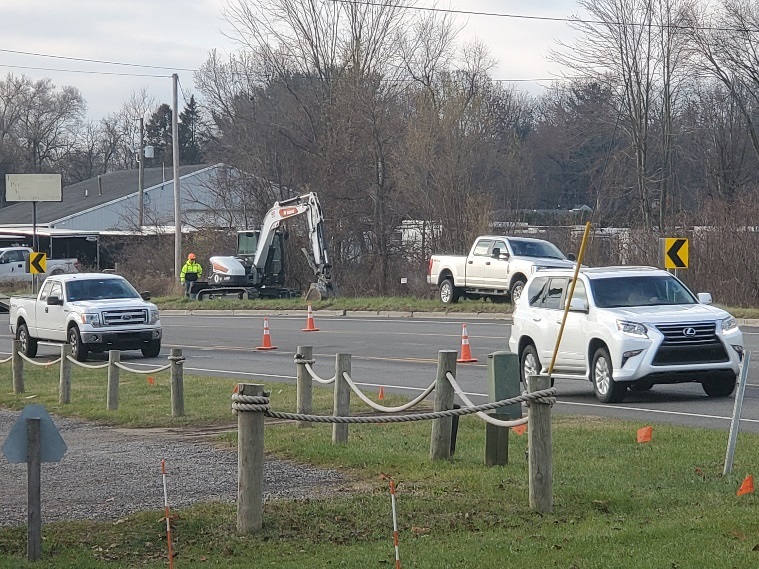News & Events
State Road 19 Drainage Problem
Over 30 years ago, State Road 19 was reconfigured into a four-lane road as it bends around the west end of the lake. A drainage system was installed under the new road by the Indiana Department of Transportation (INDOT). Several drains with grates were installed along the curbs as far as Bell Avenue.
Across the highway from Flippin’ Cow, a small retention pond was built. There is a sign near the highway identifying the land as INDOT property. Under the highway a pipe connected the drains. The system was supposed to allow the water from the curb drains to flow via the pipe under the road and into the retention pond away from the lake.
This may have worked for a while, but for many years the water simply flows across the highway towards the Flippin’ Cow parking lot, across the asphalt and into the lake. The water carries with it dirt and other highway contaminants and they end up in our lake. This is not good for the lake or for the Flippin Cow owners and patrons.
This fall, Conservancy Board members, Mark Lucas and Ryan Matherly did an onsite evaluation. Lake resident, Bob Evans directed them to an official at INDOT. That official sent them a diagram of the drainage system on State Road 19 from CR 4 to the State Line Road. It showed the drainage system under the road. But was that system working? And when had it last been checked?
 Bob Myers was consulted and directed the Conservancy to former state representative, Tim Neese. Tim put them in touch with our current state representative, Doug Miller. Doug responded quickly and within two weeks an INDOT crew was at the site to evaluate (pictured, right).
Bob Myers was consulted and directed the Conservancy to former state representative, Tim Neese. Tim put them in touch with our current state representative, Doug Miller. Doug responded quickly and within two weeks an INDOT crew was at the site to evaluate (pictured, right).
They found that the pipe under the highway was filled with debris and buried in dirt as it came out into the retention pond. The pond had filled in. Under the grates, curbside, debris blocked the flow of water.
 Will this fix the problem? We’ll see come spring rains.
Will this fix the problem? We’ll see come spring rains.
It is clear that we need to monitor systems put in by the state and county.
They only know something is not working when we tell them.








